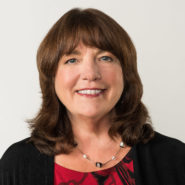AARP Eye Center
Home Alone Revisited Study Offers Closer Look at Special Issues that 20 million Family Caregivers Face
By Susan Reinhard, April 16, 2019 12:00 PM

When AARP’s Public Policy Institute (PPI) conducted its Home Alone study in 2012, the outcome was the first national look at the evolving experience of family caregivers—who are being asked to perform more complex medical/nursing tasks than ever before, who experience a high degree of stress in their role, and who historically have not even been considered part of the health care team. Complex tasks run the gamut from administering many medications, including injections, to changing dressings and handling medical equipment. This is essentially “skilled nursing care”—the skills I chose to learn to do as a nursing student. It is also what I taught family members, neighbors and friends when I was a visiting nurse. This 2012 study was an exploration of how many caregivers are performing these tasks, how they learn to do them and how they are reacting to these responsibilities. We learned much.
A lot has changed in the seven years since PPI published the study. We have advocated for states to enact the Caregiver Advise Record Enable (CARE) Act which, among other things, calls for health care professionals to identify and properly train family caregivers prior to individuals being released from the hospital. The legislation has since been enacted in 43 states and territories. And more states are considering it.
Now, seven years later, we have conducted another study to examine these issues in more depth through an online survey of 2,089 caregivers. As the results of Home Alone Revisited indicate, there remains much work to do in ensuring that family caregivers across the nation are getting the training and support they need.
With the new study, my colleagues and I sought a deeper understanding of what family caregivers who perform medical/nursing tasks experience. We also took a closer look at which tasks these caregivers are called upon to perform, and more closely examined resources and outcomes as well as multicultural, gender, and generational experiences.
Complex Tasks and Strain
Among the key findings, all of which can be found at www.aarp.org/homealone, is that half of family caregivers perform medical/nursing tasks. These individuals spend twice as many hours a week providing care as those who don’t perform these tasks. Not surprisingly, seven out of ten family caregivers who perform these tasks say they experience practical and emotional strain.
Many of these family caregivers consider the experience stressful. Indicative of the tasks they are asked to perform, about half worry about making a mistake. The more complex the tasks they perform, the more they feel stress, worry, and pressure to be vigilant.
Of course, the caregiver experience is not all negative. As the study revealed, caregivers gain satisfaction from their meaningful and crucial role. The study, for example, found that family caregivers understand they play a role in keeping their family member out of a nursing facility.
All Walks of Life
One salient finding of the study is the diversity of family caregivers. They are men and women, and they span all ethnicities and multiple generations. As previous Public Policy Institute work has highlighted, one in four is a millennial, and 40 percent of these younger caregivers support individuals with behavioral health conditions.
All such individuals are performing difficult tasks—tasks like operating medical equipment, managing incontinence, and preparing special diets—and yet health systems still have work to do in preparing them. Moreover, the emotional and physical strain on the family caregiver needs to be acknowledged and understood. What else can be done to provide the necessary support? The study addresses that question as well.
Providing Support for Caregivers
My colleagues and I created 10 recommendations based on the study’s major findings. The first such recommendation is to increase awareness of the current realities for family caregivers among the general public, health care professionals, health care delivery systems and policymakers. We also urge updating assessment tools for family caregivers to include medical/nursing tasks and capturing the complexity and trajectory of care.
Other of our recommendations target health care and social service professionals, who must respond to the worries of family caregivers, and health care systems, which must make stronger efforts to recognize family caregivers and equip them with proper instruction and support with respect to complex care. Meanwhile, the private sector and all employers must play a role by helping to better recognize and support employees who are family caregivers.
The Road Ahead
While the initial study highlighted the array of tasks family caregivers are having to perform at home, the new report goes further in underscoring the accompanying stress associated with managing pain. It makes clear the emotional and time-consuming challenges of dealing with complex tasks that at one time were the exclusive domain of health care professionals. The daily burden of performing these tasks—along with meeting the long list of less complex daily care needs, providing emotional and social support, and so on—takes a toll on family caregivers. Many are left isolated themselves, and with mental and physical health problems of their own.
As the CARE Act is designed to ensure, these caregivers must be seen as key members of the health care team—members who receive appropriate instruction, are included in decision-making, and are provided an opportunity to voice concerns. The Home Alone Revisited study can be an effective tool in assessing where we are, and where we still need to go.

Susan Reinhard, RN, Ph.D., FAAN, is a senior vice president at AARP, directing its Public Policy Institute, the focal point for AARP’s public policy research and analysis. She also serves as the chief strategist for the Center to Champion Nursing in America, a resource center to ensure the nation has the nurses it needs.























































